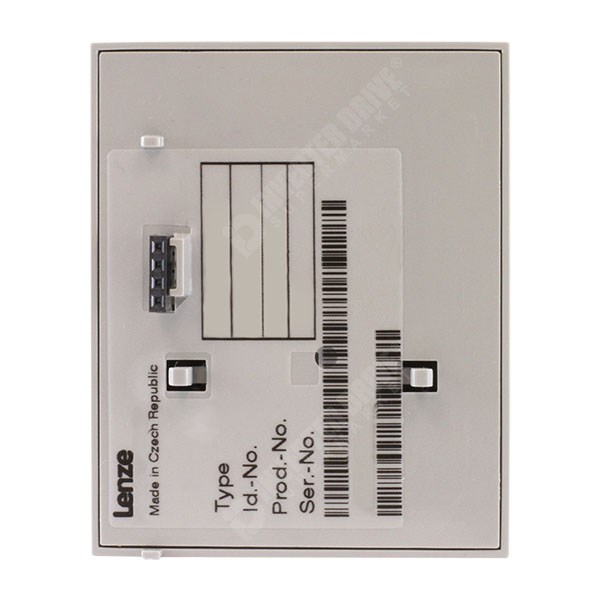This is all covered in the vSphere Storage Guide which I will aim to summarise here. ESXi uses storage APIs known as the Pluggable Storage Architecture (PSA) to manage storage multipathing. Useful terms to understand in relation to PSA include:
Powermt checkregistration – Display PowerPath Registration Key / Status. If you’ve lost the PowerPath registration key that you’ve used during the EMC PowerPath installation, you can retrieve it using the following command. # powermt checkregistration Key AAAA-BBBB-CCCC-DDDD-EEEE-FFFF Product: PowerPath Capabilities: All. Answer: Before you start EMC powerpath installation and configuration, make sure HBA cards are installed on the server and Fiber channel switches are zoned properly. Install EMC Powerpath on Linux. Download the Powerpath software from EMC powerlink website. If you’ve purchased EMC support, you should have access to powerlink. PowerPath installation is an integral part of an EMC VNX™ Operating Environment (OE) and CLARiiON®setup and configuration procedure. For information on when to install PowerPath on a host attached to a VNX OE or CLARiiON storage system, refer to the: ◆VNX OE Storage-System Support website (www.EMC.com/vnxsupport).
PowerPath supports only single-HBA configuration when unlicensed. Refer to PowerPath Installation and Administration Guide for details. root@s001 tmp# emcpreg -install EMC PowerPath Registration Do you have a new registration key or keys to enter?n y Enter the registration keys(s) for your product(s). EMC® PowerPath® Limitations in a Direct-Attached Cluster EMC PowerPath provides failover capabili ties and multiple path detection as well as dynamic load balancing between multiple ports on the same storage processor. However, direct-attached clusters supported by Dell connect to a single port on each storage processor in the storage system.
- PSA – Pluggable Storage Architecture
- NMP – Native Multipathing Plugin
- PSP – Path Selection Plugin – Handles path selection
- SATP – Storage Array Type Plugin – Handles path failover for a storage array
The default NMP plugin provided by VMware has 2 sub-plugins – SATPs and PSPs. These are also provided by VMware, although there are also third party ones available. In addition, a third party may also make their own multipathing plugin available, which can replace VMware’s NMP. EMC PowerPath is an example of this.
Installing a PSA Plugin
As stated above, PowerPath is an example of a PSA plugin you may want to install. It’s recommended that you put the host into maintenance mode before installing the plugin. After downloading the PowerPath/VE trial, extract the contents of the zip file. You can download the software here. Once you have extracted the files, copy the locate the VMware zip file and secure copy the files to the host. You could also upload the files to a vMA or to another server with vCLI installed.
Place host in maintenance mode or move the VMs to another ESXi host then perform the installation by running: esxcli -s ESXiHostAddress software vib install -d /PathtoExtractedZipFileContents/index.xml:
Once the install is complete you will need to reboot the host.
You can check out the plugin by running:
You can also install PowerPath using Update Manager, or include it as part of an custom image for use with AutoDeploy. You can read more about configuring plugins in this post.
Related posts:
1. # varyoffvg vgname
2. Required AIX LPPs
EMC.Symmetrix.aix.rte Fiber Channel devices
EMC.Symmetrix.fcp.rte Fiber Channel devices
The Symmetrix LPPs is included in the EMC ODM fileset(different version),
ftp://ftp.EMC.com/pub/elab/aix/ODM_DEFINITIONS/ the readme file contain support version of AIX
3. Enable logging - report errors, diagnostic and failover message through the syslog
EMC recommend enable syslog
To log message in /tmp/emcpsyslog.log
add '*.info /tmp/emcpsyslog.log rotate files 7 time 1d compress' to /etc/syslog.conf
touch /tmp/emcpsyslog.log
refresh -s syslogd
4. Remove all disks corresponding to storage system
lsdev -Ctxxxxxx -rname | xargs -n1 rmdev -dl
5. run '/usr/lpp/Symmetrix/bin/emc_cfgmgr' script to ensure that hdisks are configured for each path
This script invokes cfgmgr to probe adapter,after script there should be a storage-system hdisk configured for each device on each path. 'lsdev -Cc disk' can confirm that. Download script from ftp://ftp.EMC.com/pub/elab/aix/ODM_DEFINITIONS
6. Configure ODM attribute to enhance error recovery during certain failover scenarios
For FC switch environment only
chdev -l fscsix -a fc_err_recov=fast_fail -P (require reboot)
note: <<EMC Host Connectivity Guide for IBM AIX>> on powerlink provide more information about ODM attributes.
Installation:
Notes:
Don't run powermt during installation,remove and upgrade powerpath software. Doing so can result in a system crash
Make sure fast_fail feature is enable
1. installp -agXd . EMCpower or smit (The following filesets should be installed,version might be different)
Name Level Part Event Result
-------------------------------------------------------------------------------
EMCpower.base 5.3.0.0 USR APPLY SUCCESS
EMCpower.migration_enabler 5.3.0.0 USR APPLY SUCCESS
EMCpower.mpx 5.3.0.0 USR APPLY SUCCESS
EMCpower.consistency_grp 5.3.0.0 USR APPLY SUCCESS
EMCpower.encryption 5.3.0.0 USR APPLY SUCCESS
2. register the Powerpath (have license key ready)
# emcpreg -install
Initialize devices
1. # powermt config (or smit->System Management->Devices->PowerPath Disk->Configure All PowerPath Devices)
2. # varyonvg vgname
 The installation will migrate devices from AIX hdisk to PowerPath hdiskpower.
The installation will migrate devices from AIX hdisk to PowerPath hdiskpower.Note: If forgot to vary off vg before install PowerPath,devices will stay AIX hdisk and may result in errors.
To fix this:
# varyoffvg vgname
# powermt config

# varyonvg vgname
3. # pprootdev on
Enable PowerPath load balance and failover on boot device;enable bosboot function correcctly with PowerPath.
Emc Powerpath Versions
 The off/fix may generate the following warning message can be ignore
The off/fix may generate the following warning message can be ignore0301-168 bosboot: The current boot logical volume,
/dev/hd5, does not exist on /dev/hdiskX
 Note: bosboot won't work after reboot, since bosboot expect hdisk instead of hdiskpower. 'pprootdev fix' will fix this problem(after reboot). Run 'pprootdev fix' once after system restart from PowerPath, bosboot then function until next system restart.
Note: bosboot won't work after reboot, since bosboot expect hdisk instead of hdiskpower. 'pprootdev fix' will fix this problem(after reboot). Run 'pprootdev fix' once after system restart from PowerPath, bosboot then function until next system restart.4. Reconfigure appllication
Sometimes application access AIX hdisks directly, rather than through a vg(DBMS), you must reconfigure application to use PowerPath hdiskpower.
# powermt display dev=all (determine the correspondence between hdiskpower and hdisk)
Upgrade AIX
Emc Powerpath Linux
1. Uninstall PowerPath
2. Upgrade AIX
3. Install PowerPath
Add more paths
1. # pprootdev fix
2. Add path
3. # cfgmgr
4. # powermt config
5. # savebase
6. # bosboot -ad /dev/ipldevice
7. add addition device to bootlist
8. restart the host
Uninstall PowerPath
Before uninstall

1. Close any application that is using hdiskpower
2. Vary off vg using hdiskpower
3. If solutions enabler are running(storwatchd/storapid), type 'stordaemon shutdown <daemon>'
4. If EMC ControlCenter is running, shut it down
Uninstall
1. If it's a boot device, run 'pprootdev off', then restart host. If it's not, then goto step 2.
2. # installp -u EMCpower
Emc Powerpath Installation Guide Tool
3. # bosboot -ad /dev/ipldevice To create a boot image
Note:
1. Delete hdiskpower device won't erase the relationship between disk and path. To complete rebuild, you must unconfigure the powerpath0 device.
2. Hdisk doesn't have to be deleted to make them redo their PVID. rmdev -del hdiskx and cfgmgr will do the work.
Emc Powerpath Support Matrix
3. To have PVIDs on hdiskpower devices, you need only put the hdisks into the Available state. You do not need to delete them,and you do not need to first get the PVID to appear in lspv output. You do, however, need to ensure the associated path
hdisks are not in use and the device is not reserved.
